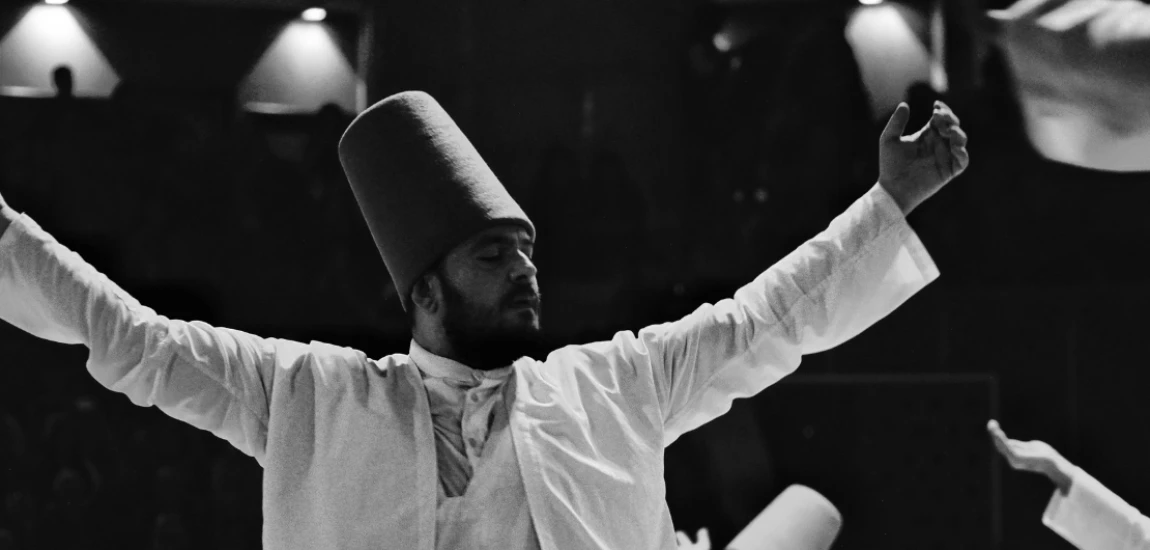The Globalization of Qawwali & Sufi Music: From Coke Studio to Coachella

Origins in devotion and poetry
Qawwali, the musical expression of Sufi devotion, traces its roots to 13th-century South Asia, largely credited to Amir Khusrau, the legendary poet and musician of the Delhi Sultanate. Born from the mystical gatherings of Sufi saints, Qawwali was designed to dissolve the boundary between performer and audience, transporting listeners into a state of wajd—spiritual ecstasy. The lyrics draw deeply from Persian, Urdu, Punjabi, and Arabic poetry, exploring divine love, unity, and transcendence.
Instruments and structure
Traditional Qawwali ensembles feature harmoniums, tabla, dholak, clapping vocalists, and a lead singer. The rhythmic repetition and call-and-response format create a hypnotic cycle, pulling listeners deeper into spiritual emotion. These musical structures—rooted in improvisation—make each performance unique, reflecting the spontaneous nature of divine connection.
The universality of Sufi philosophy
What makes Qawwali and Sufi music so enduring is their inclusive message. Whether one understands the language or not, the emotion transcends linguistic and cultural barriers. The core idea—love as a divine force—resonates universally, which later became a key factor in its global spread.
The Modern Revival: From Shrines to Studios

Coke Studio as a cultural bridge
Pakistan’s Coke Studio redefined the global image of Qawwali and Sufi-inspired music. Artists like Rahat Fateh Ali Khan, Abida Parveen, and Ali Sethi introduced the genre to millions worldwide through digital platforms. Fusing traditional lyrics with modern arrangements, the show turned devotional art into global pop without losing its essence. Songs such as Tajdar-e-Haram and Aaqa became international sensations, showcasing how Qawwali’s spirit could coexist with contemporary production.
Technology and accessibility
Digital streaming and social media platforms like YouTube and Spotify have democratized access to Qawwali. Listeners from New York to Nairobi can now experience performances once limited to Sufi shrines in Lahore or Delhi. Online collaborations and remix culture have further diversified its reach, creating new forms of musical dialogue between East and West.
Rebranding for global audiences
Younger artists have adapted Qawwali to fit modern sensibilities without losing its heart. By blending it with jazz, rock, and electronic influences, they’ve created a bridge between heritage and innovation. This adaptability has made Qawwali not just a form of worship, but a global art form of spiritual storytelling.
The Fusion Phenomenon: Qawwali Meets the World

Collaborations beyond borders
Cross-cultural collaborations have been instrumental in globalizing Qawwali. Legendary artists like Nusrat Fateh Ali Khan worked with Peter Gabriel, Eddie Vedder, and Michael Brook, introducing mystical South Asian music to Western audiences. These fusions preserved the genre’s soul while exploring new sonic landscapes.
Electronic and ambient adaptations
In recent years, Qawwali has merged with electronic and ambient genres. Producers and DJs have sampled qawwal voices and rhythmic patterns to evoke spiritual transcendence on dance floors from Berlin to Ibiza. This evolution illustrates how sacred soundscapes can thrive even in secular spaces, connecting emotion over doctrine.
Film, fashion, and festivals
Bollywood and Hollywood alike have integrated Qawwali and Sufi themes into soundtracks, while fashion brands use its motifs to evoke mysticism. International music festivals now feature Qawwali performances alongside indie rock and EDM, proving its emotional range and modern relevance.
From Shrines to Coachella: The New Global Stage

Major festival breakthroughs
The globalization of Qawwali reached a symbolic peak when artists inspired by Sufi traditions performed at global stages like Coachella and Glastonbury. The inclusion of artists such as Arooj Aftab—whose Grammy-winning music blends Urdu poetry, ambient sound, and Sufi elements—illustrates how the genre’s soul thrives in contemporary forms.
Diaspora audiences driving demand
South Asian diaspora communities in North America, Europe, and the Middle East have played a major role in popularizing Sufi music. Their cultural nostalgia, paired with Western audiences’ fascination for spirituality and authenticity, has created a fertile market for live Qawwali performances abroad.
The aesthetics of transcendence
The imagery of Sufi performance—white robes, rhythmic clapping, trance-like repetition—translates powerfully in visual culture. Global stages now use immersive lighting, projection art, and sound design to amplify the meditative aura of Qawwali, transforming ancient devotional rituals into modern experiential art.
The Power of Digital Platforms and Global Streaming

Viral performances and new audiences
YouTube performances of Qawwali songs regularly reach tens of millions of views. Artists like Atif Aslam and Rahat Fateh Ali Khan have found new life through online revivals of classic qawwalis. These performances not only sustain heritage but also introduce younger generations to their cultural roots.
Global playlists and algorithmic discovery
Streaming algorithms now place Qawwali alongside genres like world music, chillout, and spiritual jazz. Playlists titled “Sufi Chill,” “Sacred Grooves,” or “Global Mystics” expose global listeners to Qawwali’s rhythms, often leading them to explore its deeper origins.
Educational content and preservation
Podcasts, documentaries, and online archives have further globalized Qawwali by contextualizing its history and meaning. Digital preservation projects ensure that rare recordings of maestros like Sabri Brothers and Aziz Mian remain accessible, connecting generations through a shared sonic lineage.
Challenges and Critiques of Globalization

Risk of cultural dilution
As Qawwali becomes more commercialized, purists worry about the loss of its spiritual integrity. The shift from shrine-centered devotion to entertainment venues can sometimes strip away the sacred intent, turning transcendence into performance.
Balancing authenticity and innovation
Modern artists face the delicate task of preserving the purity of Qawwali while adapting to global audiences. Overproduction or linguistic simplification risks diluting its philosophical richness. However, creative fusion—when done respectfully—can expand rather than diminish the form.
Representation and credit
Another concern lies in how global recognition often sidelines traditional qawwals who sustain the art form locally. While stars gain international fame, lesser-known performers in South Asia still struggle for financial and institutional support. Sustainable globalization must ensure equity within the artistic ecosystem.




